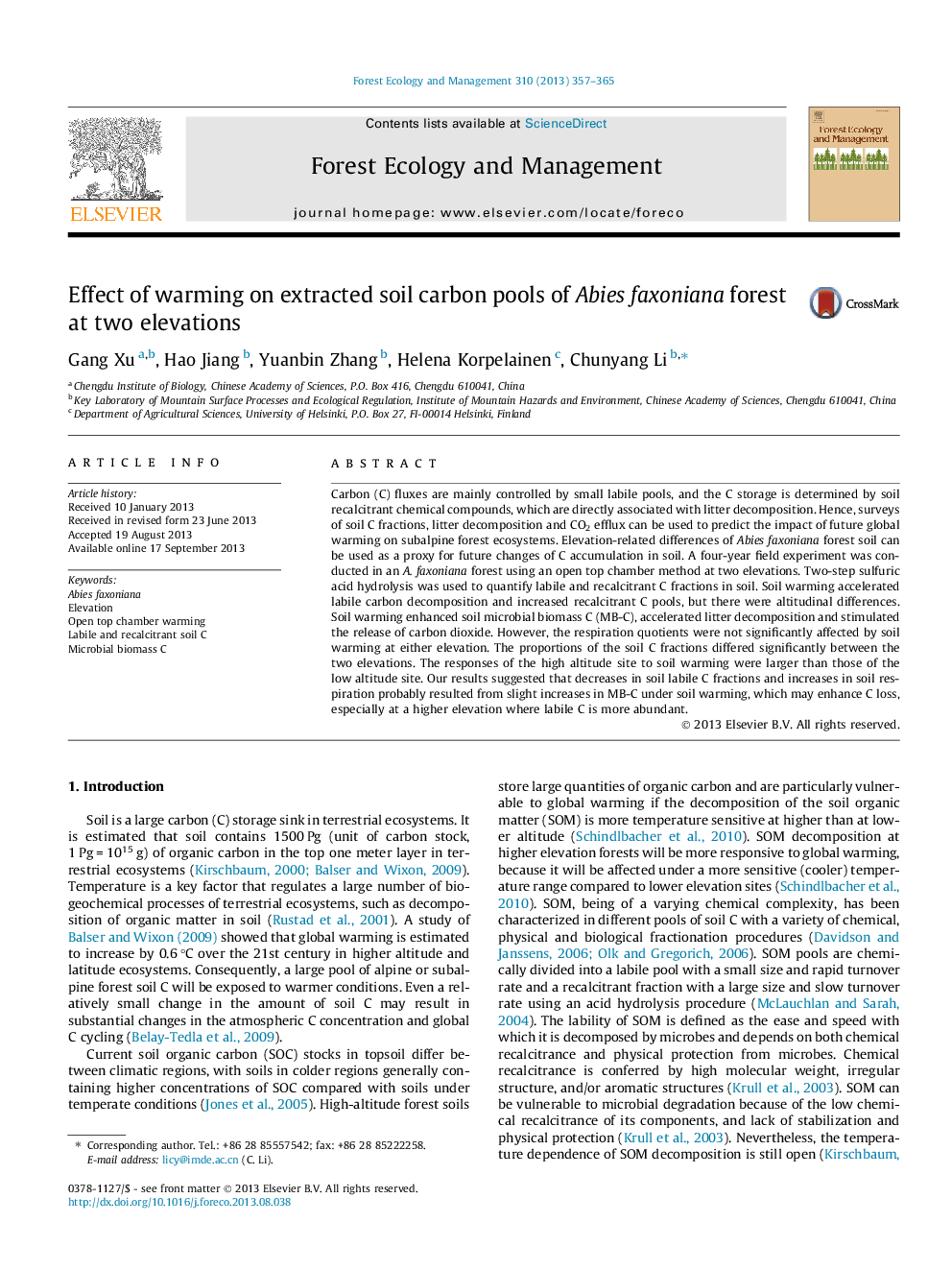| Article ID | Journal | Published Year | Pages | File Type |
|---|---|---|---|---|
| 6543718 | Forest Ecology and Management | 2013 | 9 Pages |
Abstract
Carbon (C) fluxes are mainly controlled by small labile pools, and the C storage is determined by soil recalcitrant chemical compounds, which are directly associated with litter decomposition. Hence, surveys of soil C fractions, litter decomposition and CO2 efflux can be used to predict the impact of future global warming on subalpine forest ecosystems. Elevation-related differences of Abies faxoniana forest soil can be used as a proxy for future changes of C accumulation in soil. A four-year field experiment was conducted in an A. faxoniana forest using an open top chamber method at two elevations. Two-step sulfuric acid hydrolysis was used to quantify labile and recalcitrant C fractions in soil. Soil warming accelerated labile carbon decomposition and increased recalcitrant C pools, but there were altitudinal differences. Soil warming enhanced soil microbial biomass C (MB-C), accelerated litter decomposition and stimulated the release of carbon dioxide. However, the respiration quotients were not significantly affected by soil warming at either elevation. The proportions of the soil C fractions differed significantly between the two elevations. The responses of the high altitude site to soil warming were larger than those of the low altitude site. Our results suggested that decreases in soil labile C fractions and increases in soil respiration probably resulted from slight increases in MB-C under soil warming, which may enhance C loss, especially at a higher elevation where labile C is more abundant.
Related Topics
Life Sciences
Agricultural and Biological Sciences
Ecology, Evolution, Behavior and Systematics
Authors
Gang Xu, Hao Jiang, Yuanbin Zhang, Helena Korpelainen, Chunyang Li,
